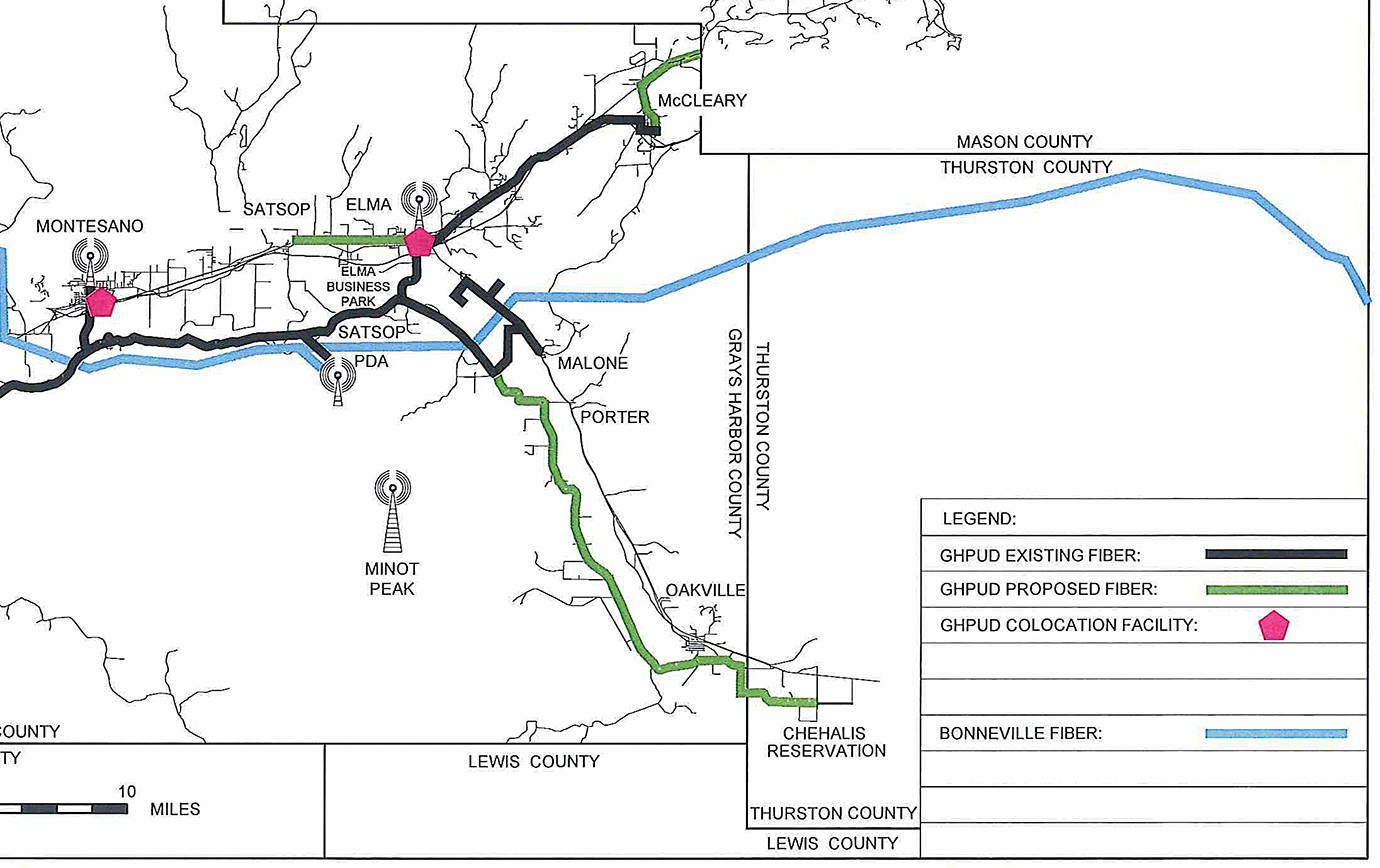Grays Harbor PUD is exploring an extension of its fiber network to allow high-speed, open-access broadband service south of Elma to Oakville and the Chehalis Indian Reservation.
A $50,000 grant from the state, announced Dec. 9, will allow the public utilities district to conduct a feasibility planning study to determine the best route for the fiber lines. The study also should identify right-of-way issues, permitting requirements, construction costs, and whether the project would fit the needs of the communities and the utility itself, said Rob Hanny, director of PUD Core Services.
The grant is one of nine awarded by the Commerce Department’s Public Works Board to fund broadband feasibility studies across the state.
The majority of the area under consideration is considered underserved when it comes to broadband connectivity, and there are pockets where there is no service at all.
One way the PUD itself would benefit from extending its fiber south to Oakville involves the utility’s substation located in Cedarville. The PUD is rebuilding that substation, currently monitored via satellite dish. A fiber connection would make for much more stable, reliable monitoring.
Sara Travers, PUD Telecom Business Coordinator, said the utility has received a large number of requests from businesses and residents along the Highway 12 corridor between Elma and Oakville for broadband service, so the need is there.
In June, the PUD celebrated the final steps to connect the Elma and Satsop school districts. Oakville is one of two Grays Harbor County school districts still not connected to PUD fiber optic lines; Lake Quinault is the other.
The benefit of fiber connections to school districts is economic as well as practical. Michael Moore, PUD communications technician, said school districts negotiate contracts with internet service providers. Prior to PUD fiber connections, the Elma School District had only one option when it came to providers. PUD fiber is open to all legitimate providers, which opens the door to a much more competitive bidding process, saving school districts money.
Local businesses along the extension route would also benefit, as Harbor Pacific and the UPS center on Schouweiler Road did with the completion of the Elma project.
Tim Martin, president of Harbor Pacific, said in June: “We’ve had issues in the past where the internet will go down and now we’re back to paper. And our productivity goes down, and our accuracy is not as good. (Fiber) is just an infrastructure that’s indispensable for our business, as it is for many businesses these days.”
Access to fiber can also open the door for more options at competitive prices for home internet users.
“Telecom is part of the service (the PUD) offers,” said Hanny. “Every legitimate provider in the county can use our system. It levels the playing field.”
The grant will likely pay for the entire feasibility study. Once completed, it will provide a guide the utility can use to determine whether the extension makes sense for the region and the PUD itself.
In January, Gov. Jay Inslee announced his “broadband for all” proposal, setting a goal for high-speed broadband connectivity to all of Washington state by 2028. He created a statewide broadband office, and the state construction budget passed by the legislature in March included $21.5 million for rural broadband funding, about $7 million in grants and more than $14 million in loans.
“This is another step towards accomplishing the governor’s vision of all Washington residents being served with quality broadband access,” Public Works Board Chairman Scott Hutsell said of the grant. “In our modern society, access to broadband internet is a vital resource that touches all aspects of life, from personal health and safety to education to economic welfare.”
At the federal level, Rep. Derek Kilmer of Washington introduced his Broadband for All Act in May, currently in the house Ways and Means Committee. The bill would would create a new tax credit of up to 75% for groups of two or more homeowners or businesses to help cover the cost of building the infrastructure needed to get them online. The tax refund applies to any available technology, so each group can choose the best option that bridges the “last mile” gap between their homes and businesses and the existing broadband service network.
It is that “last mile” that usually makes up the bulk of the expense of an expansion project like this. It’s much less costly to lay or hang fiber along major corridors; but when it comes time to connect those last few homes up driveways and away from densely populated areas, the expense per connection increases, said Hanny.
If the feasibility study shows the project would be a good fit, Hanny stresses that it won’t happen overnight. The Elma project took about two years to complete. For the Oakville project, once the feasibility study is done, it would take about a year to implement.
Then there’s the availability of the fiber itself. Moore said with the push statewide and nationally to fill in the underserved areas across the country, the availability of fiber can fluctuate. At the beginning of 2019, it took 24 to 36 weeks for delivery. The wait time is down to 18 weeks now.


